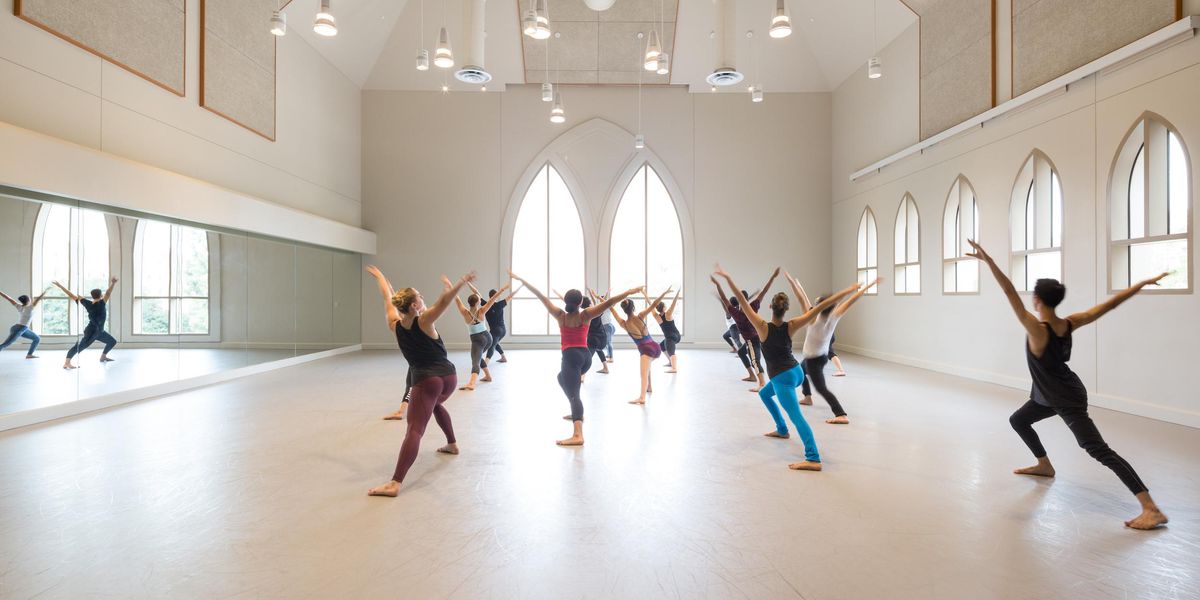10 Minutes With Monica Bill Barnes
Barnes (right) with Ira Glass and Anna Bass in “Three Acts.” Photo by Adrianne Mathiowetz, Courtesy “Three Acts, Two Dancers, One Radio Host.”
When choreographer Monica Bill Barnes and longtime artistic partner Anna Bass debuted Three Acts, Two Dancers, One Radio Host at Carnegie Hall in 2013, they never dreamed it would take them on a two-year cross-country tour. In the show, heartfelt and humorous radio host Ira Glass tells stories from his beloved program “This American Life,” colored by Barnes’ punchy, slapstick movement. Extended through December 2015, it will continue to enchant American audiences—from Alaska to Texas—with its entertaining and moving combination of two forms that Glass has claimed “have no business being together—dance and radio.” See 3acts2dancers1radiohost.com for tour stops.
How has Glass affected your view about dance?
At the heart of the show is the question I have been working on for years: how to include someone who doesn’t have a visceral understanding of what we do as dancers. I want my work, for better or worse, to be communicative. I try to create that through non-dance costumes and familiar music. One of the most profound realizations Ira has given me is how lovely it is to just tell the audience something. You can feel them relax when Ira says, “Hi, the three of us decided to make a show.” It just acknowledges that we are all people here.
Why do you think it’s been so successful?
We have a similar sense of how we want to handle the audience—not holding their hand too tightly, with an element of surprise. What was exciting was not the invention of new material, but understanding how dance and radio could be framed differently by each other. We were interested in how meaning develops from context. When I proposed the show to Ira, it had everything to do with me wanting to have a conversation with him about creative work. Sometimes something becomes successful because of business savvy, but this is just about the three of us being curious.
Has the tour been grueling?
It has been a total pleasure. We do a ton of one-offs: We hop on a plane, load in, do the show, go out for dinner and then get back on a plane. For my personality, it suits me perfectly. It allows me to live in a show.
What is the most surprising audience experience you have had on tour?
The biggest surprise came when we showed it the first time. You don’t have a sense of what is meaningful, funny or what will fall on its face until you have people who have paid for a ticket watching. Over the last year, I’ve been learning from each performance and then going back and thinking more as a director than a choreographer. Because of that, the choreography itself hasn’t changed much, but the shape of the work has really shifted. I love that Ira and Anna were both game to keep reevaluating the show.
What was reshaped?
The show has a wide emotional range, and there were times in the early versions when the shifts in mood were sharper. Once during a quick change, I accidentally slipped into the wrong costume. My performer-self intuited a more organic order. As the director, I eventually landed there.




